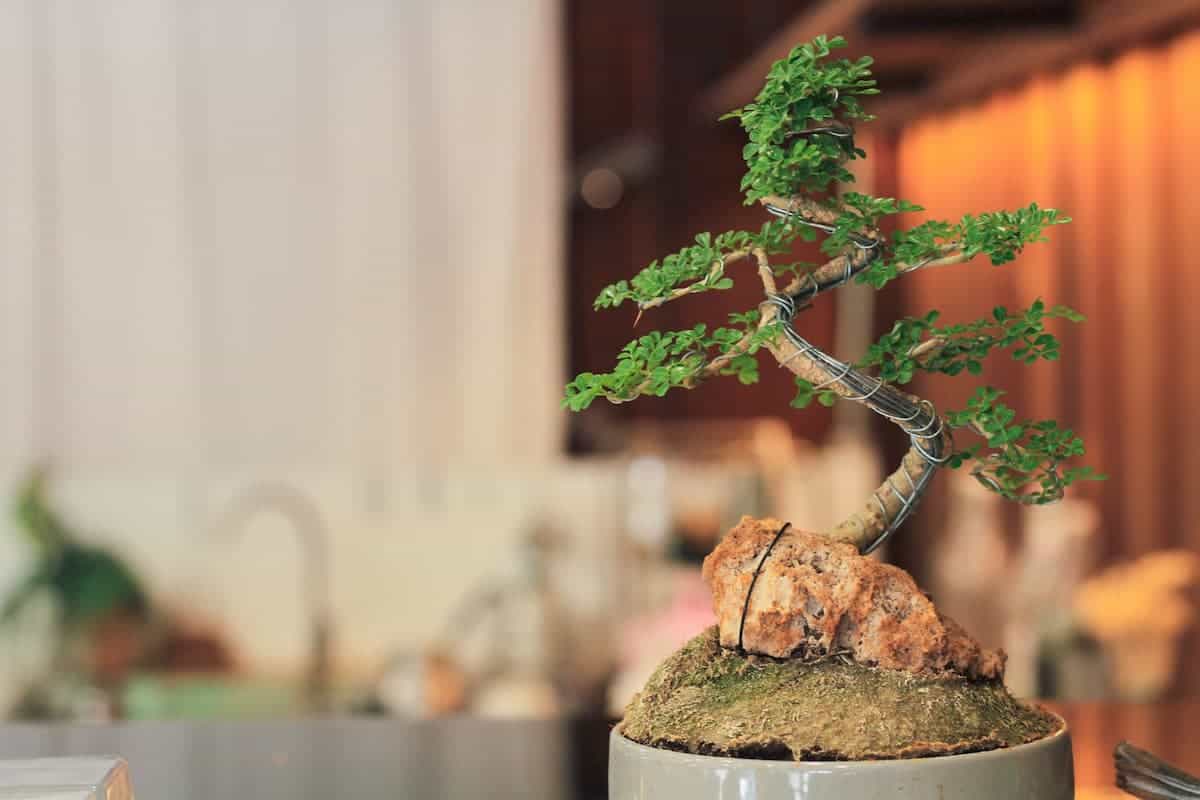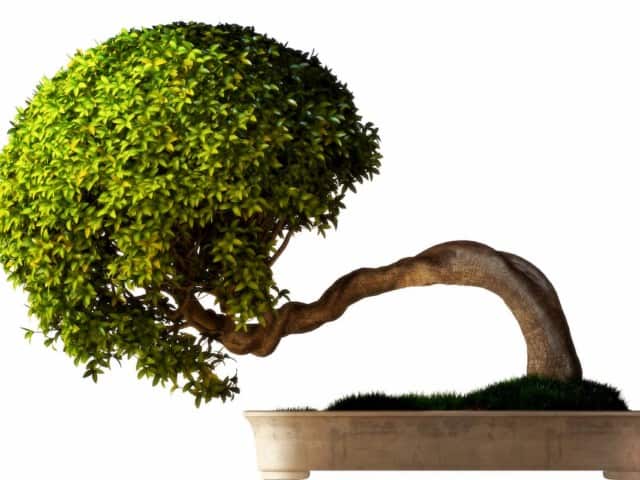Bonsai trees are practical, beautiful, and very entertaining to have around your home and office. However, it can be frustrating to see all sorts of fancy trees online while your bonsai tree doesn’t seem to cooperate.
The branches are the most visible, unique part of the tree, so there’s no question that you should train them.
To train bonsai branches, start by wiring them together, bending the branches, and keeping them pruned. Consider making deadwood portions and creating additional root systems by wiring the base of the tree. Adding the proper nutrition and hydration will pay off, allowing your bonsai to grow healthily.
Throughout this article, you’ll also learn the following info about training bonsai branches:
- Numerous methods to bend the branches without breaking them
- Different techniques to improve the trunks and branches
- The vital importance of nutrition and water for bonsai trees

Wire the Bonsai Branches Together
Wiring bonsai branches is one of the most common methods of training. If you want your bonsai tree to have special branches that grow together, then using wires will be the best course of action.
According to Bonsai Empire, copper and aluminum are the two materials that you can use to wire two branches together.
This process is quite easy, so let’s break it down below.
- When the branches are starting to grow, tie a wire around the base of the trunk in a spiraling motion.
- Wrap the wire around the trunk and up to the ends of each branch that you want to tie together. Remember that some branches look better when they’re left untouched.
- As the branches grow, consider replacing the wire with a newer, thicker one.
Single-Wire Each Branch
Much like the aforementioned wiring technique above, you can use a wire to train individual branches.
A lot of people choose to wire two branches together for a unique appearance, but there’s no reason that you can’t tie one branch to limit or maximize its growth potential. It’s a simple procedure.
Here’s how you can wire the branches of your bonsai tree:
- Wrap a copper or aluminum wire around the base of your bonsai tree. Remember to tighten it snugly, but not too tight; Otherwise, it could limit the nutrient intake.
- Continue to spiral the wire around each branch that you want to wire. Again, you can choose as many branches as you’d like.
- Remove the wire once the branch has grown to the desired shape and size.
Consider Bending the Wired Branches
Although it’s not always advisable for beginners, you can bend the branches of your bonsai tree. It might sound a bit crazy, but you’re in full control of the way the bonsai branches grow. Training its branches is as simple as slightly manipulating them weekly.
If you want to bend the branches, you’ll need to follow either of the step-by-step processes above. Wired branches are much easier to bend because you’ll be relying on the wire rather than the branch. Thick wires are much tougher than tiny bonsai branches.
Note: Never bend a branch too much or it could break. Try to limit the bending to less than â…› of an inch per month. It might sound like a small amount, but it can be quite influential in the growth of the tree.
Keep the Bonsai Tree Pruned
Grow a Bonsai mentions that pruning your bonsai tree is a crucial step in training the branches. Although the leaves are super lightweight, they add just enough weight to influence the direction that which the branches grow.
If you want to have total control over the growth process, then pruning will be an essential component.
Fortunately, you can use pruning shears to get the job done. Most bonsai trees come with a pruning kit, but if yours didn’t, you could try the CastleGreens 6-Inch Stainless Steel Garden Bonsai Pruning Shears.
They’re made out of durable stainless steel that slices right through the branches and leaves of your tree.
Always snip off the smallest bits rather than chopping at the base of the branches. If you want to know how you can cut the tree to make deadwood patches, proceed to the next section.
Create Deadwood on the Branches
Deadwood is often known as some of the most beautiful parts of a bonsai tree. That being said, a lot of owners refuse to try it because it’s tedious, challenging, and risky.
Before you get started, make sure that you have a thorough understanding of the process. Failure to adhere to the guidelines could ruin the tree.
When you’re making deadwood spots on a bonsai, you need to remove the bark, flatten the area, and cover it with a protective coating. Bonsai Empire recommends using Lime sulfur to keep it safe from bacteria.
Below, you’ll find a detailed video on making deadwood by Eastern Leaf on Youtube:
Make New Roots for the Tree
Another tactic to alter the growth patterns of the branches on your bonsai tree is to wire the trunk tightly. As you might’ve read above, it can remove vital nutrients from the trunk if you tie it too tightly.
However, a perfect job will cause the tree to make new roots that search for more nutrients.
When these roots expand, they grow more branches that have unique patterns. Not only will you be expanding the size of the tree, but once you remove the wire, the tree will be able to absorb more than enough nutrients to grow.
Supply the Proper Nutrients
Adding fertilizer to a bonsai tree is an excellent way to encourage the branches to grow. Any plant in the world could benefit from proper nutritional value, so why not provide it to your bonsai tree?
Most bonsais come with fertilizer or enriched soil. Use these according to the instructions that came with the seed or tree. If yours didn’t, then there are plenty of options that you could try. As long as it’s organic and free of pesticides, you’ll be good to go.
When a bonsai tree is stripped of sunlight or nutrition, it won’t grow properly. You won’t be able to train the branches, either. If you try to bend them when they’re wired, they’ll snap from the slightest movement.
Pay Attention to Hydration
Just as important as nutrition is water. If your bonsai tree isn’t supplied with enough water, the branches will become brittle and dry. This process takes place rather quickly, leading to cracks along the trunk and branches. It’s multiplied if they’re tied with wire.
Try to keep the soil of the bonsai slightly moist at all times. You should be able to poke your pinkie finger up to the first knuckle and find water. If it’s dry, it’s time to add water. Luckily, bonsai trees absorb moisture rather slowly.
Final Thoughts on How Do You Train Bonsai Branches
As you can see, training the branches on a bonsai tree isn’t too hard. All you need is a little bit of time and effort. Much like most other projects involving a bonsai tree, training the branches isn’t too expensive.
It’s far more than worth the wait, but it’s important to have patience and not rush the process.
Here’s a quick recap of the post:
- Try wiring and bending the branches to make unique patterns.
- Pruning a bonsai tree can improve the size of the branches.
- Consider making deadwood patches for a beautiful appearance.
- You can create new roots by wiring the trunk of your bonsai tree.
- Always provide optimal nutrition and hydration to get the most out of a bonsai tree.






